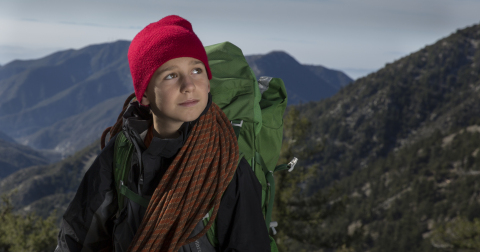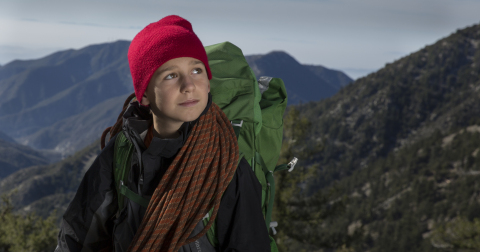YORBA LINDA, Calif.--(BUSINESS WIRE)--Tyler Armstrong began climbing mountains at seven years old for a fun challenge. Now at 11, Tyler climbs for those who can’t – the 300,000 boys around the world with Duchenne muscular dystrophy in the hopes of raising $1 million dollars to help find a cure.
Duchenne muscular dystrophy is a fatal genetic disease that weakens the muscles, leaving most boys in a wheelchair by their mid-teens. Those with Duchenne are diagnosed around age 5 and most don’t live past their mid-20s. There is no cure.
After meeting boys with Duchenne, Tyler’s climbs took on a greater significance – finding a cure for this deadly disease and honoring those boys whose muscles will become progressively weaker as they get older, while Tyler’s muscles get stronger. Tyler has set his sights on all seven summits, including Mt. Everest in 2016, with a goal of raising $1 million dollars to help find a cure.
Monies raised will go to CureDuchenne, a leading national non-profit focused on finding a cure for Duchenne.
Click to Tweet – Support Tyler Armstrong in his #ClimbtoCureDuchenne. He climbs for those who can't - boys with #Duchenne
After watching a documentary about hiking Tyler wanted to climb the highest mountain in California. To prepare for the seven summits, Tyler works out twice a day, five to seven days a week including training on an incline treadmill carrying a weighted back pack several times a week. He also practices climbing-specific skills like walking on a ladder with crampons, both horizontally and vertically, over a gap, at the Armstrong’s house.
Tyler holds several prestigious climbing records including being the youngest to climb Mt. Whitney in a single day (7 years old), the second youngest to summit Mt. Kilimanjaro (8 years old) and at 9 years old, the youngest to climb Mt. Aconcagua in the Andes of Argentina. He leaves soon to climb Mt. Elbrus in Russia, his third of the seven summits and also a training hike for his attempt at Mt. Everest next year.
A Different Kind of Mountain
For Tyler, the exercise and training to prepare for a summit gives him strength and improves his endurance. On the mountain he uses special equipment like a climbing harness, ice axes, crampons, and poles that allow him to maintain a steady pace, manage his energy and accomplish these significant feats. For boys with Duchenne, exercise accelerates the deterioration of their muscles causing their muscle cells to die and they lose the ability to walk. Boys with Duchenne use motorized scooters to preserve their strength, a wheelchair when they no longer can walk and ankle splints at night to help maintain mobility and to slow Duchenne’s debilitating effects. Every day with Duchenne brings significant challenges for the 300,000 boys around the world who battle this lethal disease.
“When I’m climbing and I get tired, I think about the boys with Duchenne and that their muscles are tired all the time,” says Tyler Armstrong in a video from his recent climb of Mt. Rainier, a training climb for Mt. Elbrus.
While there is no cure today, there is hope. The genetic defect that causes Duchenne has been identified, and more progress has been made towards treatments and potentially a cure in the past 10 years by CureDuchenne than in the previous 130 years since the disease was first identified in the late 1800’s. Three potential pharmaceutical treatments, supported by CureDuchenne are currently under review by the FDA. If approved, these medications will only treat a small number of the 300,000 boys with Duchenne. CureDuchenne will not stop until every boy with Duchenne has a lifesaving treatment and there is a cure.
“Tyler Armstrong’s courage and big heart are leading the way to more awareness and support, and with his help we are steps closer to a different kind of summit – one that saves lives,” said Debra Miller, CEO of CureDuchenne.
To support Tyler and the Climb to Cure Duchenne, please visit crowdrise.com/climbtocureduchenne.
CureDuchenne was founded in 2003 with a focus on saving the lives of those with Duchenne muscular dystrophy, a disease that affects more than 300,000 boys worldwide. With support from CureDuchenne three pharmaceutical treatments could be approved by the FDA within the next year. These treatments may lessen the effects of the disease for those with certain mutations of Duchenne, but there is still much to be done to find a cure. For more information, please visit CureDuchenne.org and follow us on Facebook, Twitter and YouTube.




